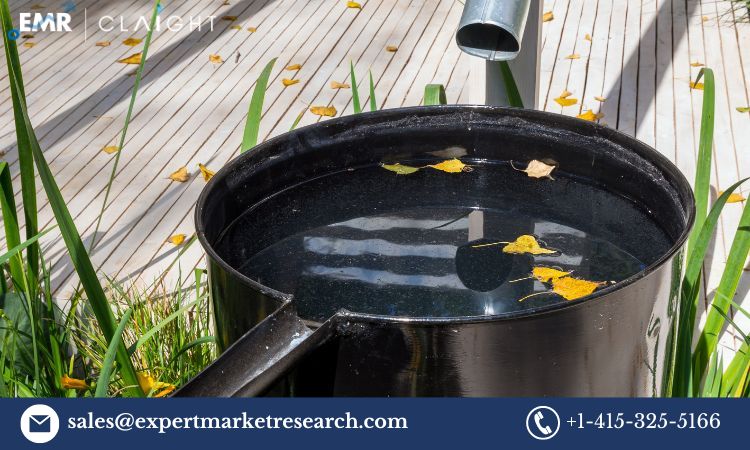Europe Rainwater Harvesting Market Share, Size & Insights

The Europe Rainwater Harvesting Market has experienced significant growth over recent years, driven by increasing environmental awareness, water conservation initiatives, and government incentives. In 2023, the market reached a valuation of over USD 218.34 million, and with a forecasted compound annual growth rate (CAGR) of 3.9%, it is expected to reach USD 308.09 million by 2032. This growth highlights the market’s potential and the rising adoption of rainwater harvesting systems across both residential and commercial sectors.
Key Benefits of Rainwater Harvesting in Europe
- Water Conservation: Rainwater harvesting systems reduce the strain on groundwater and municipal water supplies, especially in regions facing water scarcity.
- Cost Savings: By using harvested rainwater for non-potable purposes like irrigation and toilet flushing, consumers can significantly reduce their water bills.
- Sustainable Landscaping: Rainwater supports landscaping needs without over-relying on treated water sources, encouraging eco-friendly practices in gardening.
- Reduction in Flooding: These systems help mitigate flooding by capturing excess rainwater, which reduces runoff and helps control urban flooding in areas prone to heavy rainfall.
- Improved Water Quality: Harvesting rainwater reduces pollution by minimizing runoff, which often carries pollutants into local water bodies.
Key Industry Developments
The European rainwater harvesting market has seen several noteworthy developments:
- Government Incentives: Many European countries, such as Germany and the UK, are offering subsidies and tax benefits to encourage rainwater harvesting, which has boosted adoption.
- Technological Advancements: Innovations in rainwater harvesting systems, such as advanced filtration and UV purification, have improved water quality and usability.
- Green Building Certifications: Rainwater harvesting is increasingly integrated into green building standards, such as BREEAM and LEED, to promote sustainable construction.
- Partnerships for Awareness: Companies and NGOs are collaborating on public awareness campaigns highlighting the importance of water conservation and the benefits of rainwater harvesting.
Driving Factors
- Environmental Awareness: Growing environmental concerns regarding water scarcity and the need to reduce dependency on groundwater sources are driving adoption.
- Government Regulations: European Union policies, such as the Water Framework Directive, promote sustainable water management practices, including rainwater harvesting.
- Urbanization and Population Growth: The increasing urban population has heightened the demand for alternative water sources, especially for non-potable applications.
- Climate Change: Irregular weather patterns and periods of drought have made rainwater harvesting a practical solution to ensure a stable water supply.
Restraining Factors
- High Initial Costs: The installation of rainwater harvesting systems can be costly, particularly for larger commercial systems.
- Maintenance Requirements: Regular maintenance is necessary to ensure water quality and system efficiency, which can deter some consumers.
- Lack of Awareness: Despite growing interest, there is still a lack of widespread understanding of the benefits of rainwater harvesting in some regions.
- Uncertain Rainfall Patterns: In areas with low or unpredictable rainfall, harvesting systems may be less effective, which can limit their feasibility.
Market Segmentation
-
By Type:
- Above-Ground Systems: Popular for residential use due to easier installation and lower costs.
- Underground Systems: Often used in commercial applications and large residential projects, offering higher storage capacity.
-
By Application:
- Residential: Rainwater is used for irrigation, toilet flushing, and other non-potable uses.
- Commercial: Businesses and industries utilize harvested rainwater for landscaping, cooling, and cleaning.
- Agricultural: Rainwater harvesting supports irrigation, livestock watering, and other farming needs.
-
By Harvesting Method:
- Surface Runoff Harvesting: Collects water from impervious surfaces like roofs and streets.
- Rooftop Rainwater Harvesting: The most common method, which collects water from building rooftops.
Market Outlook
The market for rainwater harvesting in Europe is poised for steady growth over the next decade. Key factors contributing to this positive outlook include supportive government policies, rising consumer interest in sustainable practices, and ongoing advancements in rainwater harvesting technology. As concerns over water scarcity continue to grow, more residential, commercial, and agricultural sectors are likely to adopt rainwater harvesting solutions.
Trends in the Europe Rainwater Harvesting Market
- Smart Rainwater Harvesting Systems: IoT and sensor-based technologies are being integrated into systems to optimize water collection, usage, and monitoring.
- Eco-Friendly Building Materials: The use of sustainable materials in the construction of rainwater harvesting systems is gaining popularity to further reduce environmental impact.
- Decentralized Water Systems: Rainwater harvesting is increasingly seen as part of a decentralized approach to water management, complementing municipal water systems.
- Integration with Renewable Energy: Some advanced systems are powered by renewable energy sources, such as solar, enhancing sustainability and energy efficiency.
Regional Insights
The Europe rainwater harvesting market varies across countries:
- Germany: Leading the way in rainwater harvesting adoption, driven by strict environmental regulations and strong public awareness.
- United Kingdom: Rapidly growing market, supported by government incentives and increasing interest in sustainable urban development.
- France: A steady rise in adoption due to supportive government policies and emphasis on green infrastructure in urban planning.
- Scandinavia: The Nordic countries emphasize rainwater harvesting in green building standards, such as in Sweden and Denmark, aligning with their sustainable living practices.
Major Key Players
Some of the major players in the Europe rainwater harvesting market include:
- Kingspan Group
- Otto Graf GmbH
- Wisy AG
- System UVEX Ltd
- Boxall Ward Limited
- Others
Opportunities in the Market
- Rising Adoption in Agriculture: Farmers are increasingly utilizing rainwater harvesting to improve water availability for irrigation, which presents a significant growth opportunity.
- Technological Innovation: Companies focusing on R&D for advanced filtration and purification systems can gain a competitive edge in the market.
- Urban Development Projects: As cities expand, there are opportunities to incorporate rainwater harvesting in urban infrastructure and green building projects.
- Awareness Campaigns: Increased efforts in public education on water conservation could help boost adoption rates.
Challenges in the Market
- Variable Rainfall: In regions where rainfall is sparse or inconsistent, the effectiveness of rainwater harvesting systems is limited.
- Initial Cost Barriers: The upfront costs of installing rainwater harvesting systems can deter residential users.
- Complex Regulations: Varying regulations across countries in Europe can make it challenging for companies to navigate the market effectively.
Restraints
- Low Awareness in Certain Regions: A lack of understanding of rainwater harvesting benefits in some areas remains a challenge.
- High Maintenance Needs: The need for regular system maintenance can dissuade potential users.
- Limited Incentives in Some Countries: While some nations offer financial incentives, others do not, which can affect market growth in those areas.
Market Scope
The Europe rainwater harvesting market serves a diverse range of applications, from residential to agricultural and commercial use. As demand for sustainable water management solutions continues to grow, the market is likely to expand to include innovative applications and integrate new technologies.
Target Audience
The primary target audience for the rainwater harvesting market in Europe includes:
- Homeowners: Particularly in regions with water restrictions or high water costs.
- Businesses and Commercial Buildings: Seeking to reduce water bills and achieve sustainability certifications.
- Agricultural Sector: For irrigation and livestock watering, especially in water-stressed areas.
- Government and Municipalities: Local authorities interested in sustainable urban planning and reducing flood risks.
Top Impacting Factors
- Environmental Regulations: Stricter environmental laws across Europe support rainwater harvesting adoption.
- Urbanization Trends: Rising urban populations drive demand for sustainable water solutions.
- Technological Advances: Innovations in system efficiency, ease of use, and monitoring capabilities impact market growth.
- Cost-Saving Benefits: As water costs rise, rainwater harvesting becomes an economically viable option for more consumers.




